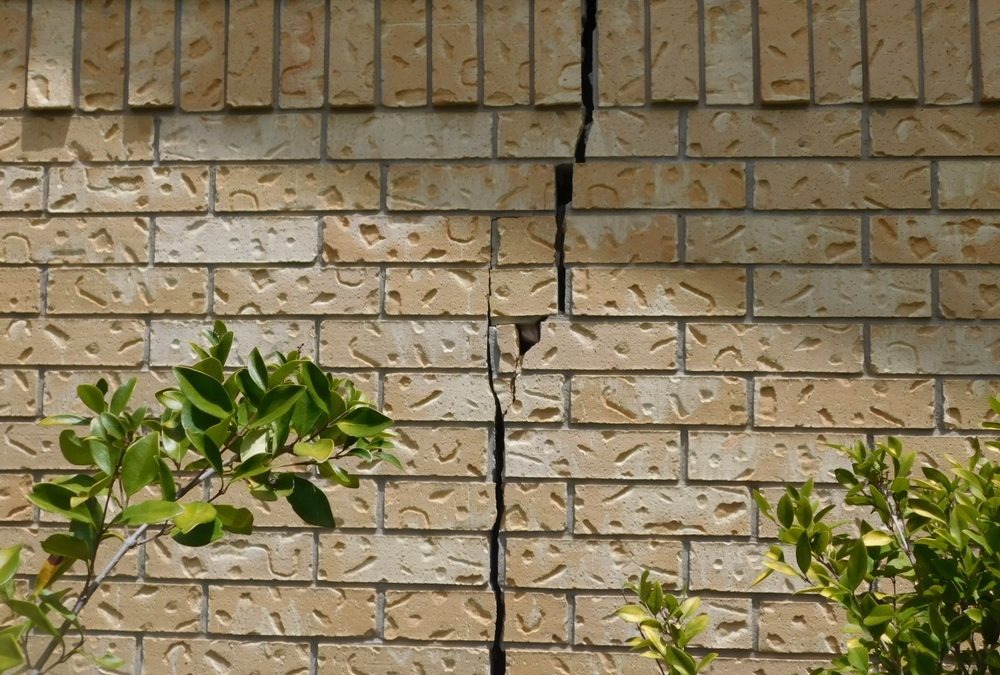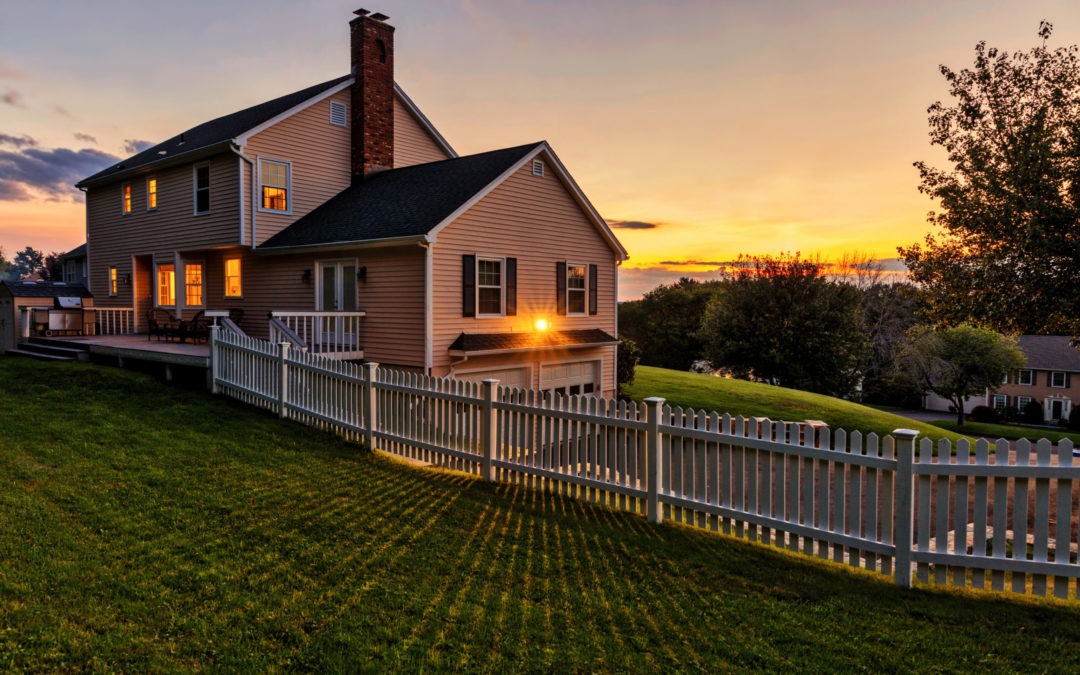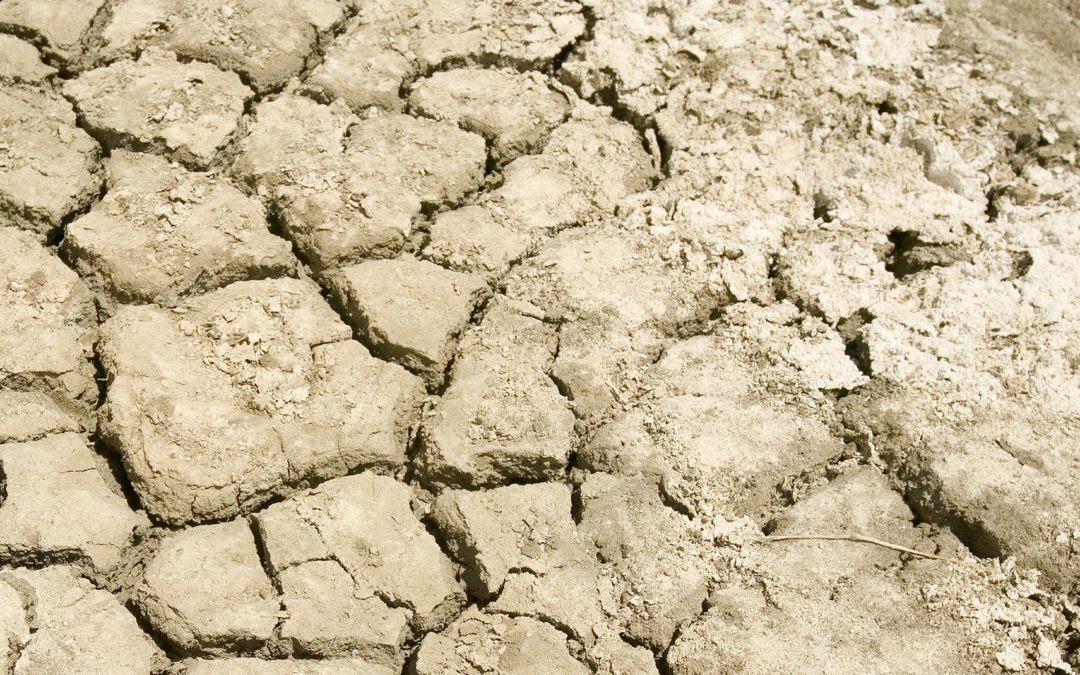Having inspected more than 5500 homes in my career, I have seen just about every degree of settling and every foundation problem that a home’s foundation can experience. I have also discovered that there is a difference between normal foundation settling and foundation problems that require extensive repairs. Most of the homes that I have inspected have foundations that fall into the category of those that have experienced some typical foundation settling while a small percentage have had serious foundation problems that needed extensive foundation repairs.
Of the 5500+ homes that I have inspected, I can probably count on my two hands the number of these homes that have not experienced any noticeable settling. What this should tell you is that some amount of settling is normal and is to be expected. Let’s talk about what foundation settling is and what causes it.
What is Foundation Settling?
Foundation settling or settlement is the natural and gradual settling or sinking of the home into the soil over time. Homes are very heavy (100 to 200 tons), and they put a tremendous amount of weight on the soil underneath them. Unless the home was built directly on bedrock (which most homes are not), it is normal for a home to sink several inches into the soil over the first five years after it is constructed, simply because of the force exerted on the soil by the weight of the home.
This limited and gradual sinking of the home into the soil is normal settling, and it is not a problem as long as it is mostly uniform across the entire home. Normal settling can cause some small cracks to form above doors or windows. A door that sticks a little bit or that does not latch is not uncommon and shouldn’t be a concern. A small diagonal crack in an interior or exterior wall also should not be concerning as long the cracks are thin (less than 1/8” or so.)
Here is a list of some signs of normal settling and are fairly common and should not normally be concerning.
1. Small diagonal cracks above doors or windows (less than about 1/8-inch wide)


2. Thin, straight cracks in walls or ceilings. These commonly form along the seams in sheetrock.


3. Wrinkles in the sheetrock tape where two walls meet.

4. A door or window that sticks when opening or closing it.
5. Small stairstep cracks in the exterior brick veneer. (NOTE: If you follow the crack all the way down to the concrete slab underneath, and the crack extends into the concrete, then this is a concern and should be looked at by a foundation specialist.) The large majority of cracks that I see do not extend into the concrete slab.


You need to keep in mind that soil is not perfectly stable, and it cannot perfectly support (without some movement) a home or anything else that sits on it over a long period of time, so don’t let some typical foundation movement alarm you. As long as we are building homes on concrete foundations that sit on compressible soil, some settling should be expected, and should not be a major concern.
Remember, homes can undergo some movement or settling and still continue to function properly. Foundations do not typically need to be repaired because of normal settling.
What is the difference between settling and a foundation problem?
What constitutes a foundation problem rather than just normal settling? Settling begins to become a problem when it affects the functionality of a house. Let’s start by talking about minor foundation problems. Some of the minor problems that will be discussed likely do not need be corrected by a foundation specialist. A minor problem related to settling may be a window or a door that sticks, making it difficult to open or close. The diagonal cracks that are so common in exterior brick walls can also be an indication of a foundation problem.
Under normal circumstances, these types of problems do not need to be repaired by a foundation specialist. In fact, a sticking or non-latching door or window will often correct itself as the weather goes from wet to dry or vice versa. The cracks in the brick veneer can also open and close with the changes in the weather. (NOTE: It’s a good idea to seal the cracks in the brick veneer with a flexible caulk that can expand and compress as the cracks open or close. Using a rigid mortar in the cracks can actually cause more damage as the cracks try to close because the mortar filling the cracks will not allow the cracks to close and this can result in new cracks forming.
If the amount of soil movement is extensive, then the sticking door or window may get worse, or the cracks in the brick veneer may get longer and wider. This can be an indication of settling that needs to be looked at by a foundation specialist.
When should I call a foundation specialist to look at my home?
Here are some signs of what I would consider to be indications of foundation problems that may need to be looked at by a foundation specialist.
- Large cracks in interior walls (wider than about 1/8 to ¼ inch)
- Cracks in the exterior brick veneer that are wide enough for a pencil to fit into.
- Doors or windows that stick hard enough to be difficult to open and or close.
- Large separations (about ¼” or more) between the exterior brick veneer and windows.
- Large cracks in the concrete slab under your home. (NOTE: Hairline cracks like those shown in the three photos below are common, and occur naturally as the concrete cures and dries. These do not indicate a foundation problem.)



6. Heaving concrete. Heaving is a “hump” in the concrete that is caused by water under the foundation that is pushing up on the foundation and causing it to heave.

This photo is concrete painted to look like brick. You can see the crack and heaving at the crack.
7. A large number of the “minor” issues described in the “normal settling” section above. If there are small cracks or sticking doors and/or windows throughout the home, then this indicates a problem that needs to be looked at.
Time is a great indicator of the seriousness of settling.
Very often, time is one of the best indicators as to how serious foundation settling is. If it can be determined that cracks in the exterior brick veneer occurred years ago, and that they have changed very little over the years since they first occurred, then it is likely that the foundation has stabilized and that the settling has basically stopped occurring. In this case my recommendation would be simply to seal up the cracks with an exterior-grade caulk in order to minimize water getting into the wall and possibly causing other problems.
Another example of how time helps determine the seriousness of settling is that the same cracks can continue opening and closing over time as the weather goes from wet to dry and from dry to wet. If this is happening, and the cracks are not getting worse, then it is likely related just to the moisture level in the soil and not to an actual foundation problem.
This same phenomenon can occur with doors or windows that stick at times and then operate perfectly at other times. If this is what is happening, and it is not getting worse over time, then I, personally, would not pay thousands of dollars for a foundation specialist to come and “fix” my foundation. My opinion, in this situation, is that the foundation is doing what foundations do – it is moving or flexing a little bit as the soil gets wet and then dries out.
As a home inspector, I have inspected several homes multiple times and with several years between inspections. I have seen the same cracks in these homes that showed little or no change as I compared photos taken at the two inspections several years apart. This type of situation normally indicates that the foundation has stabilized and that it is no longer moving significantly.
Take a look at the examples in the photos below. Each of the side-by-side photos show the same crack in the same home taken several years apart.

Photo taken in 2015

Photo taken in 2014

Photo taken in 2014

Photo taken in 2014

Photo taken in 2020

Photo taken in 2018

Photo taken in 2018

Photo taken in 2019
The photos above are examples of five different sets of cracks from three different homes taken four and five years apart. You can see that the two cracks in each set of photos have changed very little, if any, over the course of four or five years. Obviously, these examples do not show what happens in every case, but they do show what I have seen time and time again. In fact, I have seen this in the majority of cases that I have observed.
Most often, the cracks will occur early in the life of a home, and often they will not grow any bigger or any worse over the course of many years.
Most settling will occur within about the first five years of a home’s existence. This means that if you are buying a home that is five or more years old, it has likely done most of the settling that it is going to do. If it has a few cracks in the interior or exterior walls, or if it has some sticking doors or windows, then it is likely that these are indicative of what you can expect in the future. Although it is possible, it is unlikely that additional significant settling will occur in the future.
What is the best way to prevent your home from settling?
If you live in an area where there is expansive clay in your soil, then under normal circumstances the main cause of sticking doors and windows, and of cracks in the brick veneer will be changes in the moisture level in the soil around your home.
Minimizing the changes in the moisture level in the soil around your home will do more to protect your home’s foundation and prevent settling than just about anything else that you can do.
Since you cannot prevent the soil from getting wet when it rains, you need to prevent it from drying out when the weather is dry. You can do this by implementing a foundation watering program. (Foundation Watering) I have another post about foundation maintenance, so I won’t cover that in this post, but you can see my post here. Installing and maintaining gutters around your home and ensuring that they carry the water away from your home’s foundation can also help tremendously to protect your home’s foundation.
How effective is it to have your foundation repaired?
While I am not opposed to slab-on-grade foundations being repaired, I have seen instances of foundation repairs not being very effective. I have also seen instances of foundation repair being unnecessary in my opinion. As I have discussed above, soil moves. This means that foundations will move. It is a fact of life. Concrete is not rigid. Concrete actually flexes. These facts mean that foundations will move and flex. As the concrete flexes, everything in the home (framing, sheetrock, etc) in the home will flex with it. Almost all homes will settle to some degree. In my opinion, it is not worth spending thousands of dollars to fix something that is not broken, but that is normal.
I have seen instances where people (including myself) have spent $10,000 – $20,000 to have their home’s foundation repaired, only to have the foundation company come back multiple times over the next few years because cracks opened back up in the exterior brick or interior walls, or they had doors or windows that started sticking again. This is proof that foundation repairs do not stop all future movement of a home’s foundation. It is likely that the foundation repairs minimized some of the settling, but it definitely did not stop it.
If you live in an area with expansive clay soil, and your home is experiencing the types of issues described above, then there is a good possibility that you don’t need to spend thousands of dollars to have your home’s foundation repaired. Instead you can likely do just as much good (and possibly more good) by simply implementing a foundation watering plan. Water causes more foundation problems that anything else, so controlling the moisture level in the soil around your home will do more than anything else that you can do to stabilize your home’s foundation.
Summary
In summary, here are a few facts to keep in mind
- Almost all homes experience some settling.
- The settling that occurs on most homes is normal and is not a major concern.
- Most settling normally occurs in homes in about the first five years of the home’s existence.
- Most homes do not need to have their foundations repaired.
- Time is often one of the best indicators about how well a foundation is performing.
- Controlling the moisture level of the soil around your home is normally the best way to minimize settling.
I hope this information has been helpful to you. If you have any questions or comments, please leave a comment below, and I will respond as soon as possible.
Check out our post on caring for your foundation.
© 2020 Mike Morgan
This article was written by Mike Morgan, the owner of Morgan Inspection Services. Morgan Inspection Services has been providing home, septic and well inspection services throughout the central Texas area since 2002. He can be reached at 325-998-4663 or at mike@morganinspectionservices.com. No article, or portion thereof, may be reproduced or copied without prior written consent of Mike Morgan.

Does Your Foundation Need to be Repaired?
For homes built on expansive clay soils, changes in moisture level in the soil is the foundation’s worst enemy. During dry periods, the soil will contract and pull away from the foundation, leaving the edges of the foundation essentially unsupported. Since concrete slabs are flexible and not perfectly rigid, the foundation will actually sag along the edges. Then when it rains, the soil expands and pushes up against the foundation with extremely high forces.

Taking Care of Your Home’s Foundation
Any water that collects underneath a home’s foundation is a significant problem. It doesn’t matter what the source of the water is (rain, sprinklers, plumbing leaks). Since this water is in an enclosed space, there is very little evaporation that occurs, so the water just accumulates.

Foundation Watering
Watering your home’s foundation may sound like an odd thing, but if done consistently and correctly, it is probably the single most important thing that you can do to protect your home’s foundation. It is critical to minimize the wet and dry cycles to which the soil around your home is subjected.


I’m in a 1927 home..no foundation problem there. Not my carport has a huge opening (t1inch to i1. On the floor. Can u recommend anyone in TN that could help me?
I am a Texas-based inspector, so, unfortunately, I do not know anyone in TN. However, I would suggest looking up foundation repair companies in your area. It’s probably worth getting it looked at.